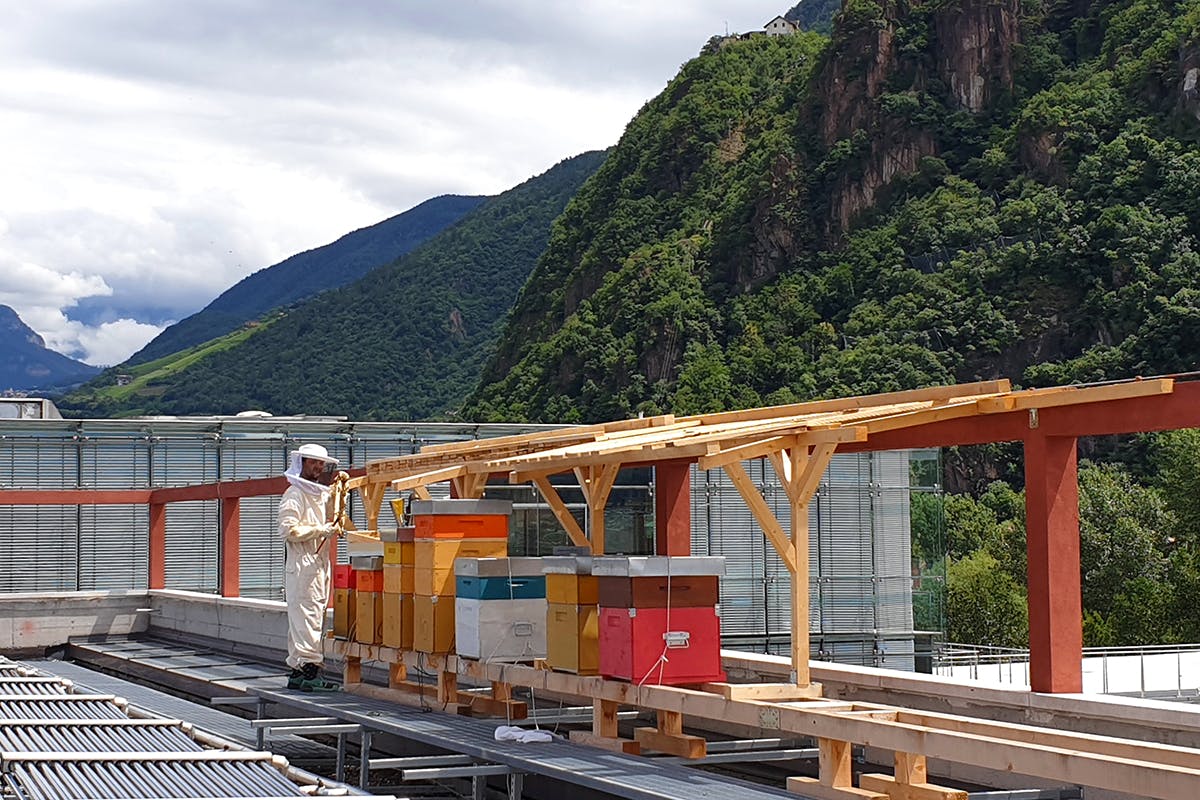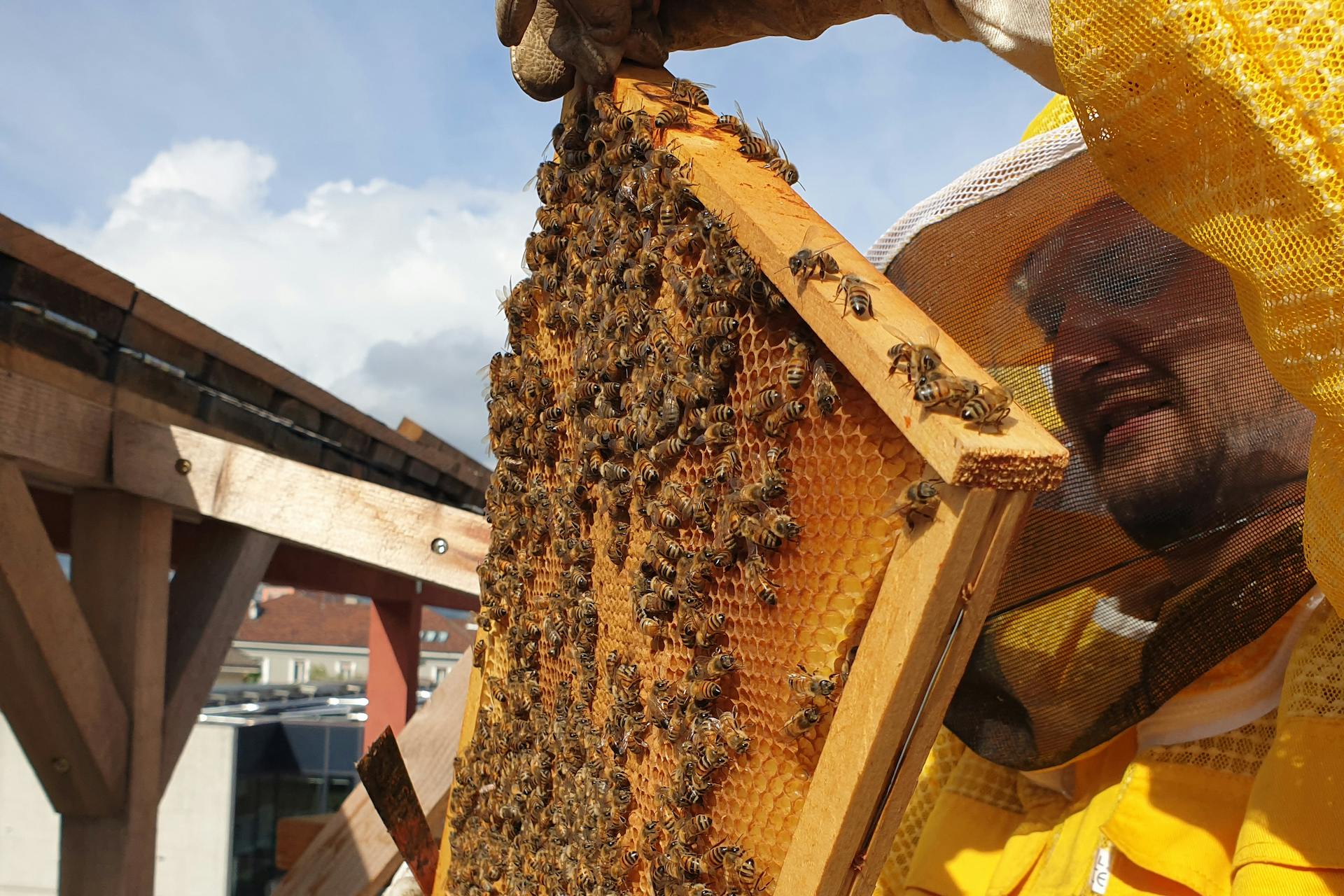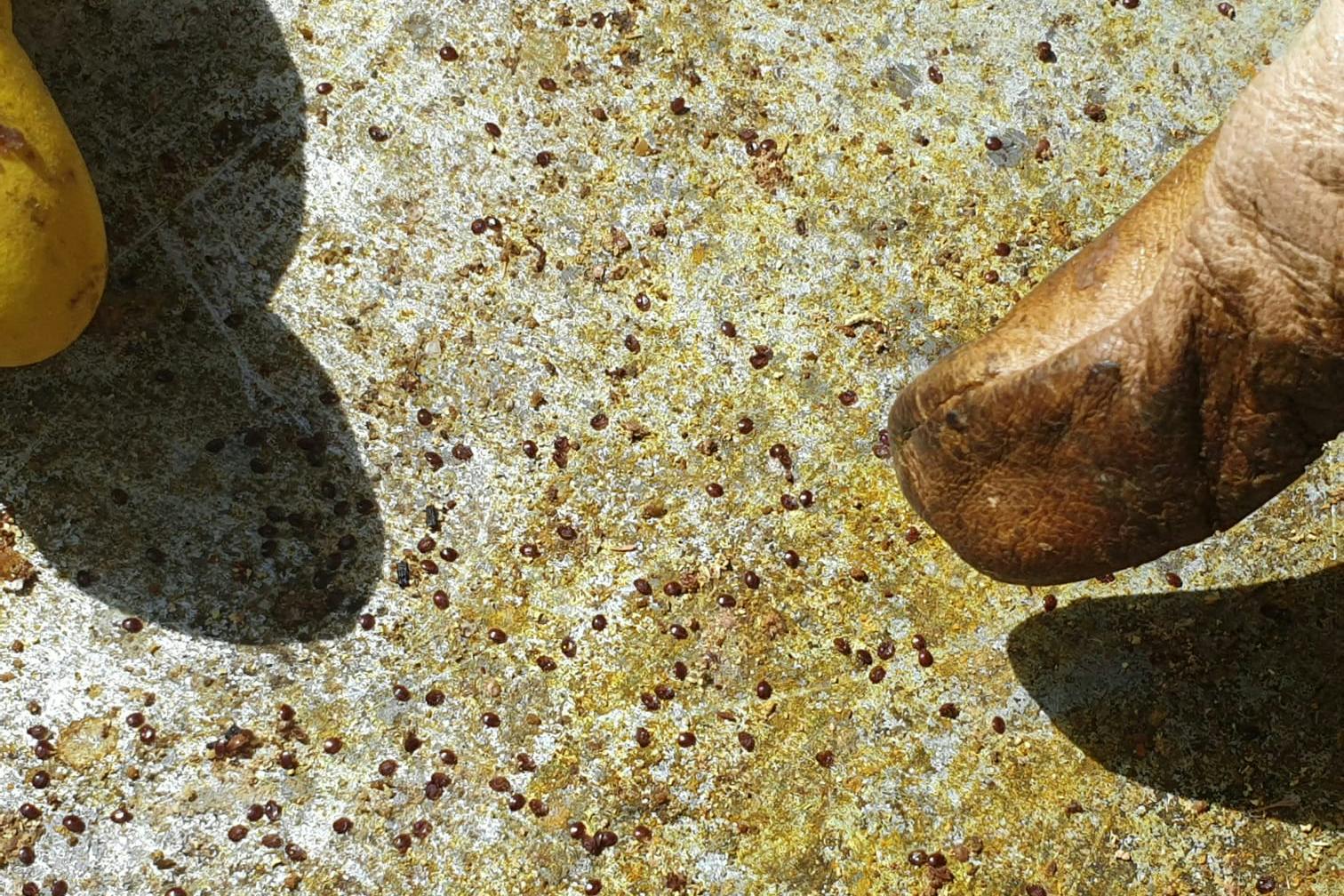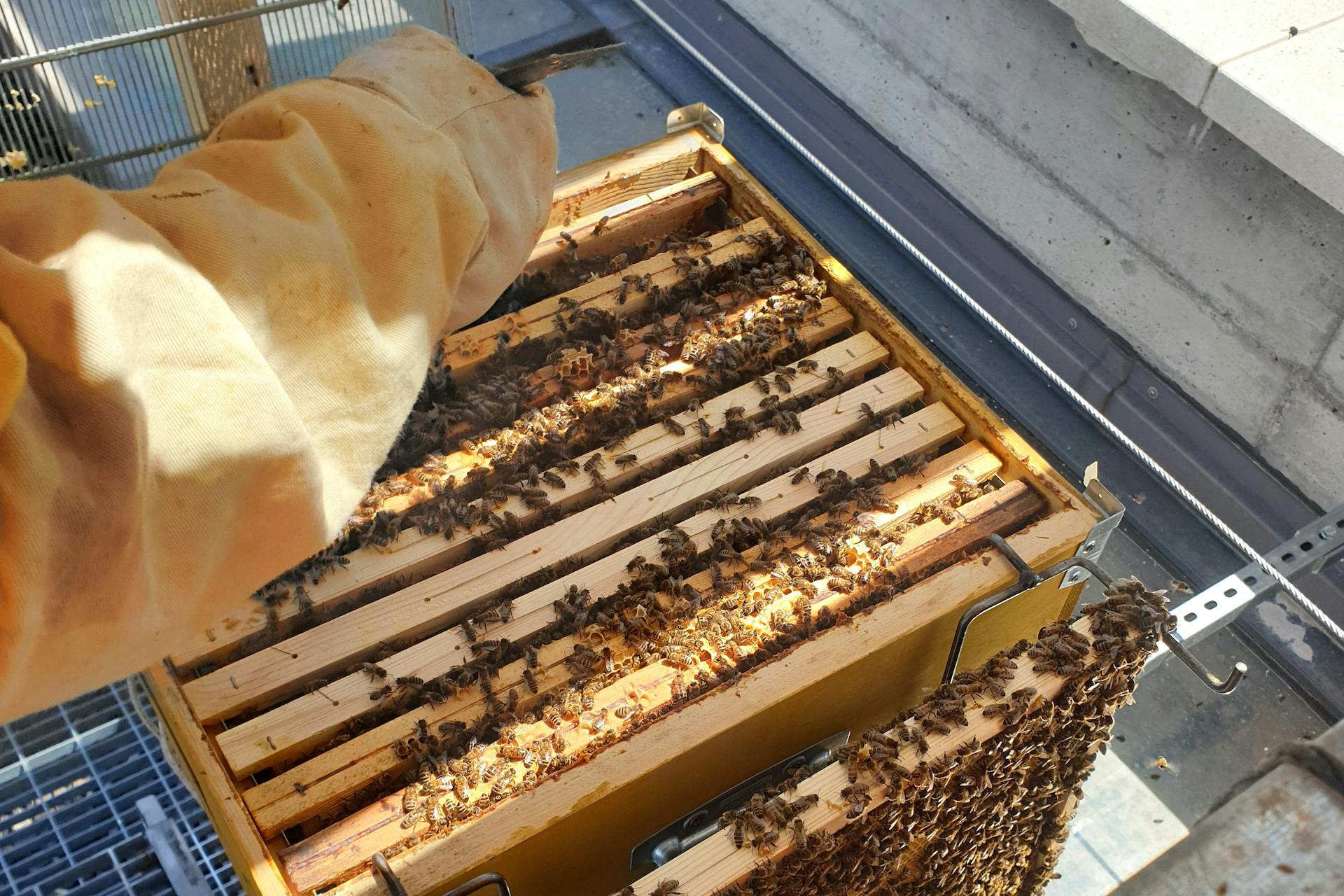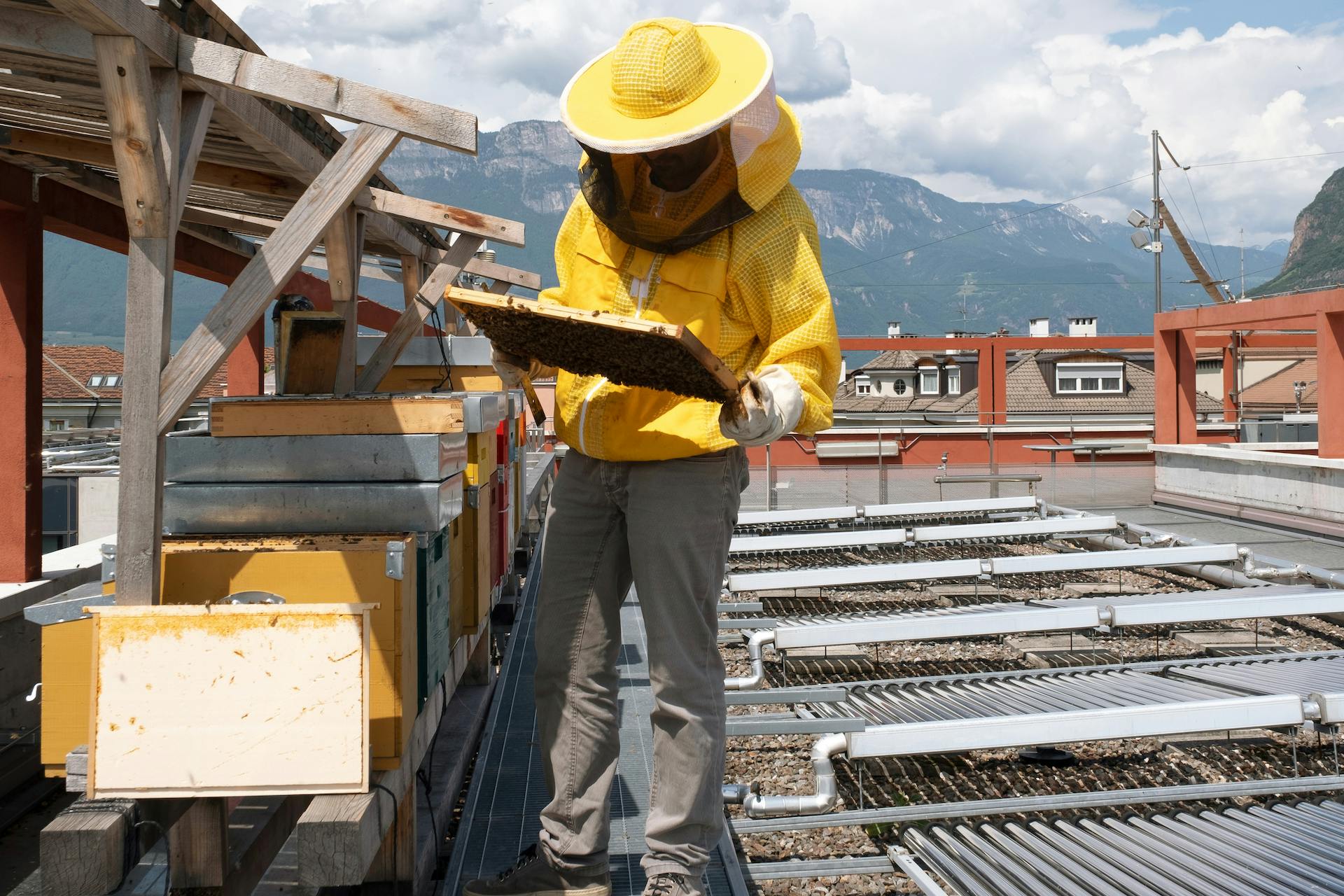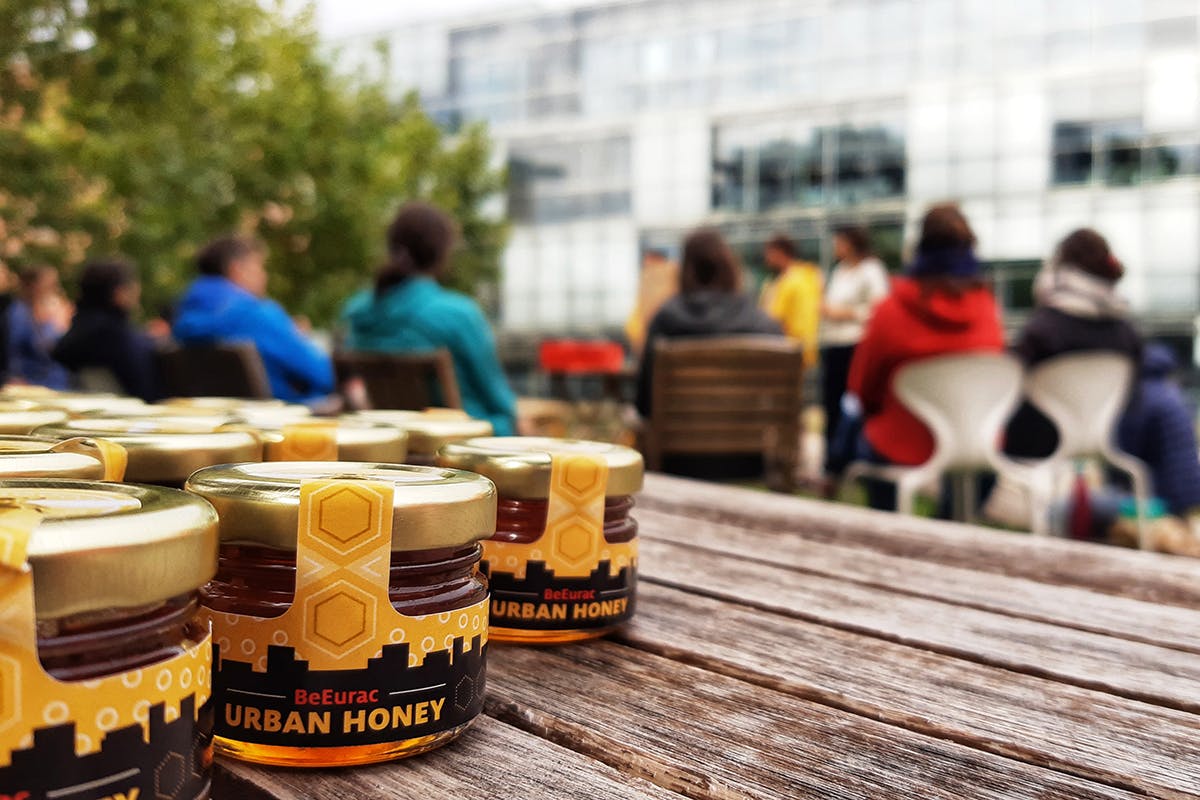The exterior of a beehive on the roof of Eurac Research - webcam
View inside the beehive - webcam
Why are bees so fascinating?
Wild bees as well as honeybees are essential for healthy ecosystems as both are very efficient pollinators. It’s only thanks to their work, that many plants are able to reproduce and spread. A large part of our planet’s food production depends on these small animals.
Bees are also valuable bioindicators that provide us with useful information about the state of their immediate environments. In some scientific studies, honeybees are used to collect environmental data - much like sensors or controllers - by gathering pollen samples which can be used to calculate pollutants in the air. Beekeeping in the middle of the city also raises citizen awareness about nature and biodiversity and creates a valuable connection to native bees, in turn raising awareness of the dangers these wild populations are exposed to.
Our Center for Sensing Solutions has set up a system to continuously monitor hive activity. On different days, at different times and in each season, life in the hive is buzzing and the bees are engaged in a variety of activities.

24 hours ...
During the day, some of the worker bees forage pollen and nectar. Certain flowers offer more in the morning, others at noon, and some in the afternoon. The bees know this and work during the hours when the yield is greatest. Other worker bees take care of cleaning and caring for the queen. There are also bees that guard, build, nurse and feed the newly hatched larvae, and tracker bees that scout new shelters for the swarm. At night, some bees continue to perform various tasks such as controlling the temperature in the hive, while the collector bees sleep during the dark.

... and 4 seasons
Contrary to what is often believed, bees do not hibernate in winter, but huddle close together inside the hive to form a so-called winter cluster. During this time, the queen stops laying eggs. All activities are reduced to a minimum until the end of winter. At the beginning of spring, when the first flowers bloom, work is resumed, and the collectors fly out again to harvest. Summer is when the number of gatherers is at its greatest, allowing the colony to exhaust every nectar source. Honey stores also visibly grow. In the fall, the few late blooming flowers are harvested. The queen is stimulated to lay eggs, from which the winter bees hatch.
Gallery
The story
In 2019, ornithologist Matteo Anderle joined Eurac Research as member of the Biodiversity Monitoring South Tyrol project team. After graduating from the University of Florence with a degree in wildlife and environmental management he went on to obtain his PhD from the University of Innsbruck. And, ever since childhood, Matteo’s passion has been beekeeping!
With his move to Bolzano, Matteo had to give up his apiary in his hometown Pergine, Trentino. But not long after his relocation he met two other bee enthusiasts at Eurac Research: Chiara Paniccia and Giulio Genova. Together they began thinking how they could keep bees in Bolzano and came up with the idea of a city hive at Eurac Research. Next step was to present their idea to Stephan Ortner, the director of the research center who, as biologist himself, was thrilled.
Today, the rooftop of Eurac Research is home to an apiary of 10 bee colonies that the Eurac Research team can visit to observe the insects and learn from the beekeepers. On special occasions there's a sweet gift from the apiary!
Monitored parameters
Weight
Weighing the hive regularly throughout the year is the easiest way to determine if the colony is healthy. If the weight decreases, checks must be made to understand why. On the other hand, if the weight increases, it may mean that the queen is laying eggs and the colony is growing or that the bees are producing a lot of honey. However, during the year, large fluctuations are also normal. Basically, the hive is lighter in winter and much heavier in summer.
The temperature - inside and outside
Inside the hive, although the temperature follows the outside environment, it remains much more stable. When it is cold outside, the bees generate heat by moving. To cool the environment, they have several tactics. The most common is ventilation, but they can also introduce tiny drops of water into the hive.
CO₂ and relative humidity
The normal value of carbon dioxide (CO₂) is about 1%. When the value exceeds 3%, groups of bees ventilate the room by rapidly flapping their wings and circulating the air. Excessive relative humidity (RH) is controlled in the same way, by keeping it at about 40%. Humidity affects both the health of the brood and adult bees.
More info
Naturschutzbund Österreich (Deutsch)
Faszination Wildbienen - Grandiose Vielfalt (Deutsch)
Il declino delle api e degli impollinatori, ISPRA (Italiano)
Editorial: The decline of wild bees: Causes and consequences, Frontiers (English)
We haven’t seen a quarter of known bee species since the 1990s, National Geographic (English)
Infographic: What’s behind the decline in bees and other pollinators?, European Parliament (English)


